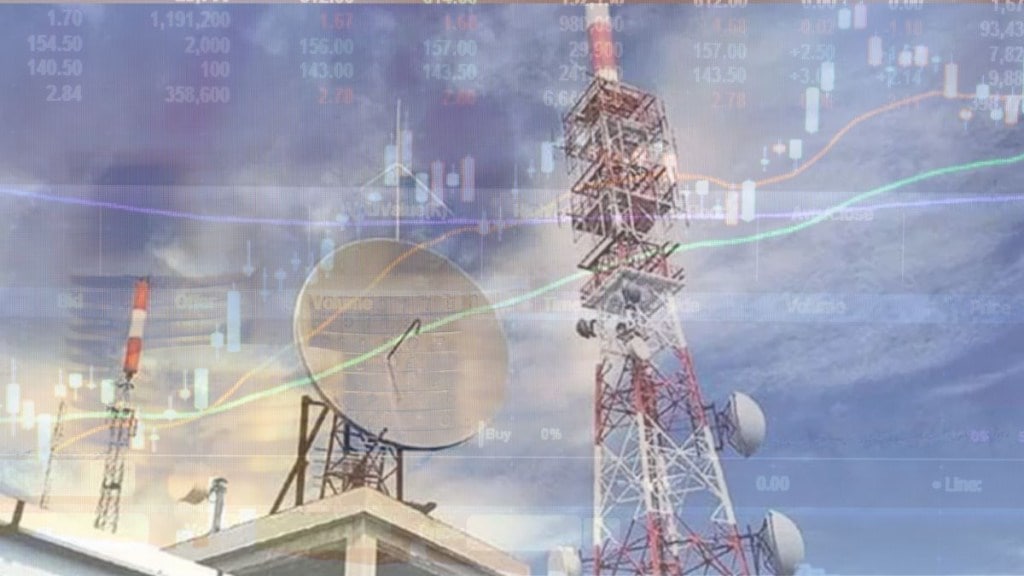India’s telecom sector is poised to deliver steady growth, with industry AGR (including National Long Distance or NLD) expected to rise at a 9.8 per cent CAGR over FY25–30, according to a report by ICICI Securities. The growth will be driven by sustained pricing power, a likely 20 per cent tariff hike in FY27, strong data and voice consumption, and a robust uptick in fixed broadband revenues.
ICICI Securities has introduced a fixed broadband growth model, projecting a strong 15.4 per cent revenue CAGR during the same period. This, it added, will be led by Reliance Jio and Bharti Airtel.
In terms of capex for private telcos, ICICI Securities said, they are expected to remain flat or slightly decline, which could boost free cash flow. With fewer reinvestment opportunities, this could translate into higher dividends or share buybacks for investors.
In the report, ICICI Securities recaliberated its mobile macro model, pushing its earlier expectation of a tariff hike from FY26 to FY27, now projecting a rise of around 20 per cent across categories in that year. According to ICICI Securities, subscriber growth is forecasted at 2 per cent annually with minimal threat from new entrants, supporting the case for sustained pricing power among private players.
Expectations on AGR
Over the period FY20-25, ICICI Securities said, the industry subscriber base was flattish at 1,157 million and this was impacted by SIM consolidation on three tariff hikes taken in the past five years coupled with a clean-up of subs-base.
Meanwhile, ARPU grew at a CAGR of 3.4 per cent to Rs 192 in FY25. This was supported by 1) Tariff hikes – three large tariff hikes; 2) Premiumisation – pre-paid to postpaid, 2G to 4G, and now to 5G, and 3) Rise in data usage. However, per the brokerage firm, data usage monetisation was much below the desired level due to unlimited allowance structure.
Consequently, India telecom’s adjusted gross revenue (circle-wise + NLD) has grown at a CAGR of 13.4 per cent to Rs 2,674 billion. Within industry, Bharti Airtel had the best showing with a CAGR of 19 per cent over FY20–25 at Rs 1,045 billion, followed by Reliance Jio at a CAGR of 18.1 per cent. VIL’s AGR (incl. NLD) has dipped 0.5 per cent over five years to Rs 381 billion.
In terms of market share, Reliance Jio, ICICI Securities said, is market leader with an AGR (incl. NLD) market share of 42.2 per cent in FY25, up 780bp in the past five years. Bharti’s share was 39.1 per cent (+830bp) in FY25. VIL lost market share, and stood at 14.3 per cent in FY25. “Bharti benefited from network expansion (distribution-led gains) in the past few years and during that time it had aggressively rolled out 4G services while Vodafone Idea suffered due to limited network expansion,” the report maintained.
ICICI Securities has projected subscriber growth to continue at a steady 2 per cent annually, driven by India’s expanding population, decreasing age of mobile ownership, and increasing rural connectivity. By FY30E, it added, the country’s mobile subscriber base is expected to reach 1,277 million.
Now considering an expected tariff hike of around 20 per cent across segments in FY27 and sustained ARPU growth, AGR (including NLD) revenue is estimated to grow at a 9.8 per cent CAGR to Rs 4,274 billion over FY25–30. In terms of the telcos, ICICI Securities said, all three private telecom operators are expected to gain 10–50 basis points in AGR (including NLD) market share during the FY25–30E period.
Higher pricing power for telcos
With usage of services grown exponentially – minutes/data usage CAGR of 12.6 per cent / 37 per cent over FY17–25 – telecom players are enjoying higher pricing power. On average, subscribers spend over three hours daily on their mobile devices.
In the past, pricing power was constrained due to heightened competition from new market entrants. However, with limited risk of fresh competition emerging, ICICI Securities said, pricing power is likely to remain intact over the foreseeable future.
Capex likely to decline, boosting free cash flow
Between FY17–25, the telecom industry saw strong infrastructure growth, with towers growing at an 8.1 per cent CAGR as Bharti and RJio competed for market share. However, by FY25, tower growth had slowed to just 3.5 per cent, mainly driven by Bharti. The slowdown, according to ICICI Securities, is expected to continue in the coming years. Similarly, BTS (Base Transceiver Station) rollout grew at 9.7 per cent CAGR over FY17–25 but dropped sharply to 2.9 per cent in FY25.
This suggested that telecom capex and competitive intensity have peaked and will likely ease going forward, leading to lower spending in future technology rollouts. However, this could also mean slower growth in tenancy and revenues for tower companies.
During FY20–25, AGR, including NLD grew at a 13.4 per cent CAGR, while capex rose at 8.8 per cent. Going forward, AGR is expected to grow at 9.8 per cent CAGR from FY25–30E, while absolute capex is set to decline. This, ICICI Securities said, signals strong free cash flow (FCF) potential for the industry over the next five years.
Starlink: No disruption yet
Despite rapid growth in Starlink’s satellite capacity, ICICI Securities said that there will be little disruption risk to Indian telcos. Starlink’s Direct-to-Cell (DTC) service, currently offered via just 8 per cent of its satellites, remains too limited in speed and coverage to pose a serious threat. According to the report, Starlink’s efforts are more complementary than competitive, helping improve coverage rather than disrupt existing services.
To conclude…
ICICI Securities said that India’s telecom sector is expected to enter a phase of stable, moderate growth led by pricing discipline, modest subscriber expansion, and better FCF dynamics—making telcos long-term compounders, though without major rerating triggers in the near term.

